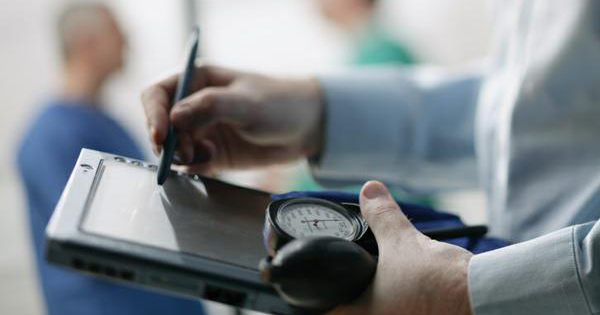How to Monitor Blood Pressure at Home
 High blood pressure is diagnosed when blood pressure is consistently equal to or greater than 140 mm Hg/90 mm Hg.
High blood pressure is diagnosed when blood pressure is consistently equal to or greater than 140 mm Hg/90 mm Hg.
According to the Centers for Disease Control and Prevention about 70 million adults are diagnosed with high blood pressure. This is equal to about 1 out of every 3 adults in this United States.
Blood pressure diagnosis is often based on clinic blood pressure readings. This is problematic due to a variety of factors resulting in inaccurate readings. Some factors that impact blood pressure accuracy include adequate rest period prior to blood pressure measurement, cuff size appropriate for arm circumference, and cuff deflation rate. Additional challenges to the clinic settings is whether or not the reading reflects the normal blood pressure level when outside the clinic setting. Many suffer from what is termed “white coat hypertension” where blood pressure rises in response to the medical environment.
Monitoring blood pressure at home is one step you can take to supplement clinic monitoring for a more complete representation of typical blood pressure levels.
A Joint Scientific Statement from the American Heart Association (AHA), American Society of Hypertension (ASH), and Preventive Cardiovascular Nurses Association (PCNA) encourages increased regular use of self-monitoring blood pressure for the majority of patients with hypertension to increase patients’ engagement and ability to manage their blood pressure, as well as enable the care team to provide appropriate and timely treatment.
Take these steps to monitor blood pressure at home:
Step 1: Discuss with your doctor. Confirm self-monitoring blood pressure would be beneficial for your situation. Determine in what form and how often your doctor would like to receive your readings.
Step 2: Select a home blood pressure monitor. A wide variety of devices are available from partially to fully automated. Upper arm devices are recommended by AHA, ASH, PCNA for greater accuracy, so avoid wrist and finger monitors. Typical cost will range between $50 to $100 for a good quality monitor. Consult with your doctor or medical supply company to ensure you select the appropriate cuff size.
Step 3: Practice taking your blood pressure.
Do not:
- Drink coffee within 30 minutes before measuring.
- Use tobacco products within 30 minutes before measuring.
- Exercise within 2 hours before measuring.
- Talk while taking your reading.
Do:
- Use the restroom to ensure bladder is not full.
- Sit quietly for 5 minutes before measuring.
- Make sure back is supported and feet are flat on the floor.
- Remove clothing from your upper arm.
- Rest arm on table top to ensure it is supported and at heart level.
- Take two or three readings 1 minute apart and recording all results.
- Measure at the same time each day, such as morning or evening, based on your doctors’ recommendation.
American Heart Association video: How to Monitor Your Blood Pressure at Home.
Step 4: Test home blood pressure measuring technique and accuracy. Take your monitor to your doctors’ office and take a series of readings. General practice is two readings with the home monitor followed by a third reading with a standard blood pressure monitor. Then two additional readings, one on the home monitor and final reading by the health-care provider. Most typically blood pressure will decrease over the five readings. Guidelines are not established for how closely the home monitor and standard monitor readings should match, but this gives you a general sense of accuracy. Repeat annually to ensure your monitor continues to be accurate.
Step 5: Track blood pressure values. You have many options for recording your readings. Select what is most convenient for you.
- Electronic trackers
- Patient portal, Heart360, smartphone applications
- Paper trackers
Optimal blood pressure is a reading less than 120/80 mmHg. An occasional single high reading is not cause for concern. Consult your doctor if you have several high readings in a row. Your treatment plan may need to be adjusted. Seek emergency care if you systolic reading (top number) is ever equal to or greater than 180 mmHg or diastolic reading (bottom number) is equal to or greater than 110 mm Hg.
For guidance on steps you can take to lower blood pressure levels and reduce dependence on medication, access 7 Natural Ways to Lower Blood Pressure at http://lowerbloodpressurewithlisa.com.
All the best,
Lisa Nelson RD
Health Pro for HealthCentral



